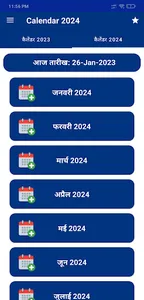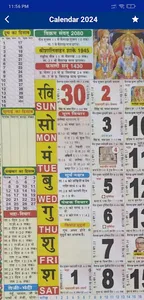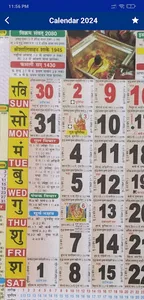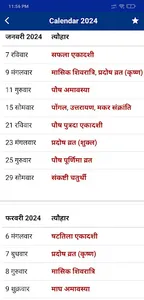The Hindu Panchang calendar 2024 is a lunisolar calendar, which means that it is based on the cycles of the moon as well as the solar year. The calendar is used to determine important religious festivals and ceremonies in Hinduism, as well as to keep track of the cycles of nature.
The Hindu calendar is divided into 12 months, with each month containing either 29 or 30 days. The months are:
1. Chaitra (March-April)
2. Vaisakha (April-May)
3. Jyaistha (May-June)
4. Asadha (June-July)
5. Sravana (July-August)
6. Bhadra (August-September)
7. Asvina (September-October)
8. Kartika (October-November)
9. Agrahayana (November-December)
10. Pausa (December-January)
11. Magha (January-February)
12. Phalguna (February-March)
It's worth noting that the dates of the Hindu calendar can vary slightly from year to year, as the calendar is based on astronomical calculations and can be adjusted to align with the cycles of the moon and the solar year.
The Hindu calendar is divided into 12 months, with each month containing either 29 or 30 days. The months are:
1. Chaitra (March-April)
2. Vaisakha (April-May)
3. Jyaistha (May-June)
4. Asadha (June-July)
5. Sravana (July-August)
6. Bhadra (August-September)
7. Asvina (September-October)
8. Kartika (October-November)
9. Agrahayana (November-December)
10. Pausa (December-January)
11. Magha (January-February)
12. Phalguna (February-March)
It's worth noting that the dates of the Hindu calendar can vary slightly from year to year, as the calendar is based on astronomical calculations and can be adjusted to align with the cycles of the moon and the solar year.
Show More





